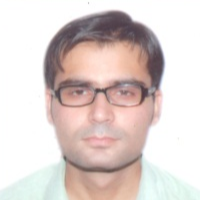International Journal of Computer Network and Information Security (IJCNIS)
IJCNIS Vol. 6, No. 10, 8 Sep. 2014
Cover page and Table of Contents: PDF (size: 638KB)
Efficient Clustering Technique for Cooperative Wireless Sensor Network
Full Text (PDF, 638KB), PP.40-47
Views: 0 Downloads: 0
Author(s)
Index Terms
Cooperative Communication, Virtual MIMO, Wireless Sensor Network, Energy Efficiency
Abstract
The nodes of a wireless sensor network (WSN) collect the data of interest from the deployment area and cooperatively send it to sink in multiple hops. Recently, virtual multiple input multiple output (V-MIMO) technique has been introduced in which the node cooperation is extended to form a virtual antenna array and communication is accomplished using space time block coding. The present work extends the scope of V-MIMO by proposing a new clustering technique. It creates the temporary cluster heads and their respective cooperative nodes, collects information from them and then the final clustering is accordingly done. The simulation result shows significant improvement in the energy efficiency of the WSN.
Cite This Paper
Kaushlendra Kumar Pandey, Neetesh Purohit, Ajay Agarwal, "Efficient Clustering Technique for Cooperative Wireless Sensor Network", International Journal of Computer Network and Information Security(IJCNIS), vol.6, no.10, pp.40-47, 2014. DOI:10.5815/ijcnis.2014.10.05
Reference
[1]I. Akyildiz, W. Su, Y. Sankarasubramaniam, and E. Cayirci, “A survey on sensor networks,” IEEE Commun. Mag., vol. 40, no. 8, pp. 102–114, Aug. 2002.
[2]Ankit K. Jain, Ankit Khare, and Kaushlendra K. Pandey. Developing an efficient framework for real time monitoring of forest fire using wireless sensor network. In Proc. Of the 2nd IEEE Int’l Conf. on Parallel, Distributed and Grid Computing (PDGC-2012), 2012. ISBN 978-1-4673-2922-4.
[3]Eleni Klaoudatou, Elisavet Konstantinou, Georgios Kambourakis, and Stefanos Gritzalis,- A Survey on Cluster-Based Group Key Agreement Protocols for WSNs, IEEE COMMUNICATIONS SURVEYS & TUTORIALS, VOL. 13, NO. 3, THIRD QUARTER 2011.
[4]S. Cui, A. J. Goldsmith, and A. Bahai, “Energy efficiency of MIMO and cooperative MIMO techniques in sensor networks,” IEEE J. Sel. Areas Commun., vol. 22, no. 6, pp. 1089–1098, Aug. 2004.
[5]V. Kawadia, P.R. Kumar, Power control and clustering in Ad Hoc networks, in: Proceedings of IEEE INFOCOM, San Francisco, CA, March 2003.
[6]M. Chatterjee, S.K. Das, D. Turgut, WCA: a Weighted Clustering Algorithm for mobile Ad Hoc networks, Cluster Computing 5 (2) (2002) 193–204.
[7]A.D. Amis, R. Prakash, T.H.P. Vuong, D.T. Huynh, Max-Min Dcluster formation in wireless Ad Hoc networks, in: Proceedings of IEEE INFOCOM, March 2000.
[8]A.B. McDonald, T. Znati, A mobility based framework for adaptive clustering in wireless ad-hoc networks, IEEE Journal on Selected Areas in Communications 17 (8) (1999) 1466–1487.
[9]S. Basagni, Distributed clustering algorithm for ad-hoc networks, in: Proceedings of the International Symposium on Parallel Architectures, Algorithms, and Networks (I-SPAN), Fremantle, Australia, June 1999.
[10]G. Gupta, M. Younis, Load-balanced clustering in wireless sensor networks, in: Proceedings of the International Conference on Communication (ICC 2003), Anchorage, Alaska, May 2003.
[11]S. Bandyopadhyay, E. Coyle, An energy efficient hierarchical clustering algorithm for wireless sensor networks, in: Proceedings of the 22nd Annual Joint Conference of the IEEE Computer and Communications Societies (INFOCOM 2003), San Francisco, California, April 2003.
[12]S. Ghiasi, A. Srivastava, X. Yang, M. Sarrafzadeh, Optimal energy aware clustering in sensor networks, Sensors Magazine MDPI 1 (1) (2004) 258–269.
[13]O. Younis, S. Fahmy, HEED: A Hybrid, Energy-Efficient, Distributed clustering approach for Ad Hoc sensor networks, IEEE Transactions on Mobile Computing 3 (4) (2004) 366–379.
[14]W.B. Heinzelman, A.P. Chandrakasan, H. Balakrishnan, Application specific protocol architecture for wireless microsensor networks, IEEE Transactions on Wireless Networking (2002).
[15]K. Akkaya, M. Younis, A survey on routing protocols for wireless sensor networks, Elsevier Journal of Ad Hoc Networks 3 (3) (2005) 325–349.
[16]Y.T. Hou, Y. Shi, H.D. Sherali, On energy provisioning and relay node placement for wireless sensor networks, IEEE Transactions on Wireless Communications 4 (5) (2005) 2579–2590.
[17]K. Dasgupta, K. Kalpakis, P. Namjoshi, An efficient clustering–based heuristic for data gathering and aggregation in sensor networks, in: Proceedings of the IEEE Wireless Communications and Networking Conference (WCNC, 2003), New Orleans, LA, March 2003.
[18]J. N. Laneman, D. N. C. Tse, and G. W. Wornell,” Cooperative Diversity in Wireless Networks: Efficient Protocols and Outage Behavior,”IEEE Transactions on Information Theory, vol. 50, no. 12, pp. 3062-3080, Dec. 2004.
[19]S. M. Alamouti, ―A simple transmit diversity technique for wireless communications,” IEEE Journal on selected areas in communications, vol. 16, no. 8, pp. 1451-1458, Oct. 1998.
[20]KK Pandey, A Jain, and R Dekar, “The Energy Efficient Cooperative MIMO Technique for Hierarchical Clustering Protocol”, International Journal of Computer Applications 57(9):23-28, November 2012.
[21]A. Nosratinia, T. E. Hunter, and A. Hedayat, ―Cooperative Communication in Wireless Networks,” IEEE Communications Magazine, Oct. 2004.
[22]A. Sendonaris, E. Erkip, and B. Aazhang, ―User cooperation diversity-part 1: system description,‖ IEEE Trans. Commun., vol. 51, no. 11, pp. 1927-1938, Nov. 2003.
[23]M. Dohler, E. Lefranc, and H. Aghvami, ―Space-time block codes for virtual antenna arrays,‖PIMRC, Lisbon, Portugal, Sep. 2002.
[24]A. Bletsas, A. Khisti, D. P. Reed, and A. Lippman, ―A Simple Cooperative Diversity Method Based on Network Path Selection,” IEEE Journal on Selected Areas in Communications, vol. 24, no. 3, pp. 659-672, Mar. 2006.
[25]Aitor del Cos Umberto Spagnolini and Christian Ibars, Cooperative Distributed MIMO Channels in Wireless Sensor Networks IEEE JOURNAL ON SELECTED AREAS IN COMMUNICATIONS, VOL. 25, NO. 2, FEBRUARY 2007.
[26]Xin Zhang, H. Vincent Poor and Mung Chiang Optimal Power Allocation for Distributed Detection Over MIMO Channels in Wireless Sensor Networks IEEE TRANSACTIONS ON SIGNAL PROCESSING, VOL. 56, NO. 9, SEPTEMBER 2008.
[27]Z. Zhou,S. Zhou, S. Cui, and J. Cui, “Energy-efficient cooperative communication in a clustered wireless sensor network,” IEEE Trans. Veh. Technol., vol. 57, no. 6, pp. 3618–3628, Nov. 2008.
[28]S. K. Jayaweera, ―Virtual MIMO-based cooperative communication for energy-constrained wireless sensor networks,” IEEE Transaction on Wireless Communications, vol. 5, no. 5, pp. 984–989, May 2006.
[29]H. Nama, M. Chiang, and N. Mandayam, “Utility-lifetime trade-off in self-regulating wireless sensor networks: a cross-layer design approach,” in Proc. 2006 IEEE ICC.
[30]S. Sengupta, M. Chatterjee, and K. A. Kwiat, “A game theoretic framework for power control in wireless sensor networks,” IEEE Trans. Comput., vol. 59, no. 2, pp. 231–242, 2010.
[31]H. Ren and M. Q.-H. Meng, “Game-theoretic modeling of joint topology control and power scheduling for wireless heterogeneous sensor networks,” IEEE Trans. Automation Science Eng., vol. 6, no. 4, pp. 610–625, 2009.
[32]W. Saad, Z. Han, M. Debbah, A. Hjφrungnes, and T. Ba?sar, “Coalitional game theory for communication networks,” IEEE Signal Process. Mag. vol. 26, no. 5, pp. 77–97, 2009.
[33]D. Wu, Y. Cai, and J. Wang, “A coalition formation framework for transmission scheme selection in wireless sensor networks,” IEEE Trans. Veh. Technol., vol. 60, no. 6, pp. 2620–2630, 2011.
[34]O. N. Gharehshiran and V. Krishnamurthy, “Coalition formation for bearings-only localization in sensor networks—a cooperative game approach,” IEEE Trans. Signal Process., vol. 58, no. 8, pp. 4322–4338, 2010.
[35]W. B. Heinzelman, A. P. Chandrakasan, and HariBalakrishnan, ―An Application-Specific Protocol Architecture for Wireless Microsensor Networks,” IEEE Trans. Wireless Commun., vol. 1, no. 4, Oct. 2002.
[36]J. G. Proakis, Digital Communications, 4th ed. New York: McGraw-Hill, 2000.
[37]S. Cui, A. J. Goldsmith, and A. Bahai, “Modulation optimization under energy constraints,” in Proc. IEEE Int. Conf. Commun., Anchorage, AK, May 2003, pp. 2805–2811.
[38]Qiang Gao, Yi Zuo, Jun Zhang, and Xiao-Hong Peng “Improving Energy Efficiency in a Wireless Sensor Network by Combining Cooperative MIMO With Data Aggregation” IEEE TRANSACTIONS ON VEHICULAR TECHNOLOGY, VOL. 59, NO. 8, OCTOBER 2010.
[39]H. Chernoff, “A measure of asymptotic efficiency for tests of a hypothesis based on the sum of observations,” Ann. Math. Statist., vol. 23, no. 4, pp. 493–507, Dec. 1952.


